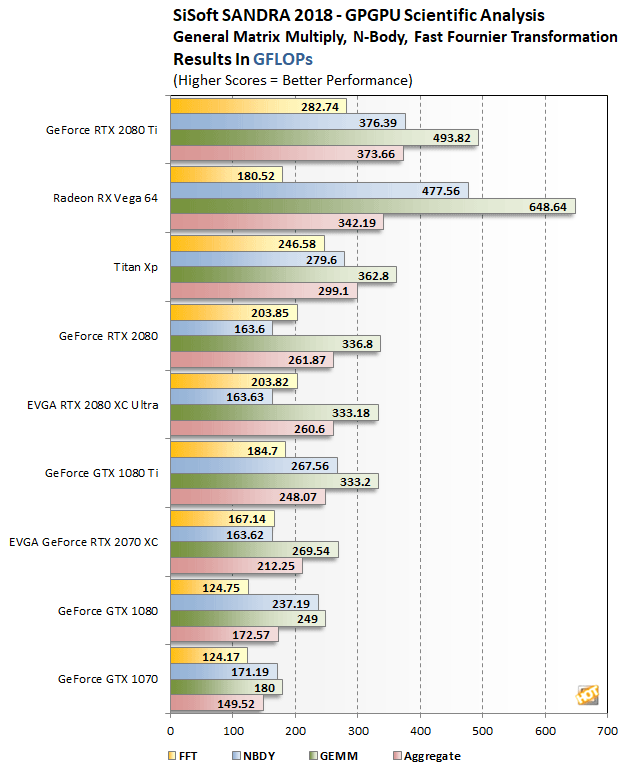GeForce RTX 2070 Review With EVGA: Turing's Sweet Spot
How We Configured Our Test Systems: We tested the graphics cards represented in this article on a Gigabyte Aorus X299 Gaming 7 Pro motherboard powered by an Intel Core i9-7980XE 16-core processor and 32GB of G.SKILL DDR4 RAM clocked at 2666MHz. The first thing we did when configuring the test system was enter the UEFI and set all values to their "high performance" default settings and disabled any integrated peripherals that wouldn't be put to use. The memory's clock was manually dialed in to ensure optimal memory performance at the processor's maximum supported speed of 2666MHz (without overclocking), and the solid state drive was then formatted and Windows 10 Professional x64 was installed and fully updated. When the Windows installation was complete, we installed all of the drivers, games, and benchmark tools necessary to complete our tests.
We should note that the AMD Radeon RX Vega card was tested in its default "Balanced" power mode throughout. Power Saver (slower) and Turbo (faster) power modes are also available with Vega, which would affect performance, noise output, and peak power consumption.
|
|
|
| Hardware Used: Intel Core i9-7980XE (2.6 - 4.2GHz, 18-Core) Gigabyte X299 Gaming Pro 7 (Intel X299 Chipset) Radeon RX Vega 64 GeForce GTX 1080 GeForce GTX 1080 Ti Titan Xp EVGA GeForce RTX 2080 XC Ultra MSI GeForce RTX 2080 Gaming X Trio GeForce RTX 2080 GeForce RTX 2080 Ti ASUS RTX 2080 ROG STRIX Gaming OC 32GB G.SKILL DDR4-2666 Samsung SSD 860 Pro Integrated Audio & Network |
Relevant Software: Windows 10 Pro x64 NVIDIA Drivers: v411.33 AMD Drivers: Crimson v18.9.1 Benchmarks Used: SiSoft SANDRA GPGPU LuxMark v3.1 Unigine Superposition VRMark 3DMark "Fire Strike" 3DMark "Time Spy" Middle-Earth: Shadow Of War Rise Of The Tomb Raider Tom Clancy Ghost Recon Wildlands Strange Brigade Final Fantasy XV FarCry 5 |
|
|
|
SANDRA's Scientific Analysis benchmark uses OpenCL (AMD) or CUDA (NVIDIA) and runs though an array of General Matrix Multiply (GEMM), N-Body Simulations (NBDY),and Fast Fournier Transformation operations and reports the overall speed in GFLOPs. An aggregate result is generated as well...

|

Things look a little better for the RTX 2070 in LuxMark. Here, the EVGA GeForce RTX 2070 XC pulls ahead of the Titan Xp in two of three tests and trails only the higher-end GeForce RTX cards and the Radeon RX Vega 64.






